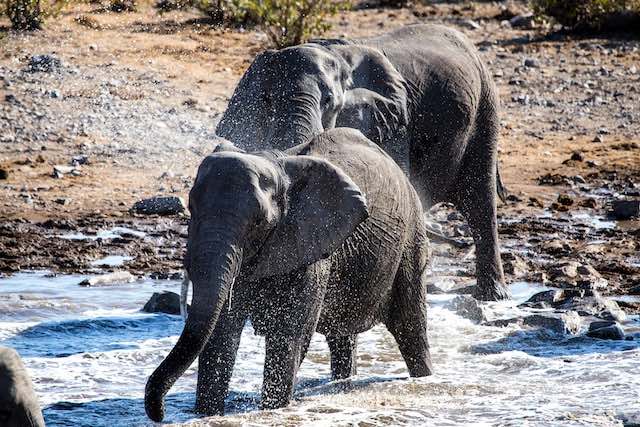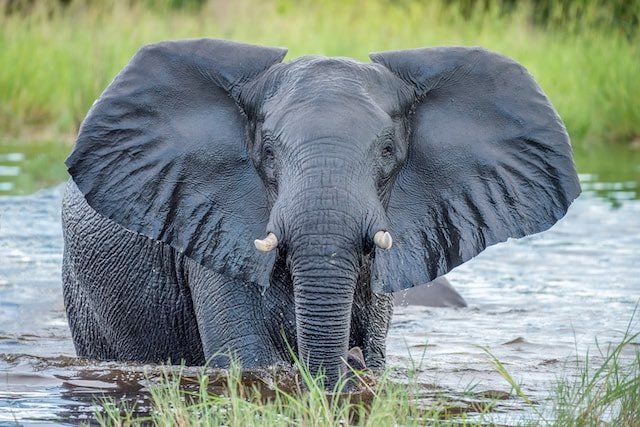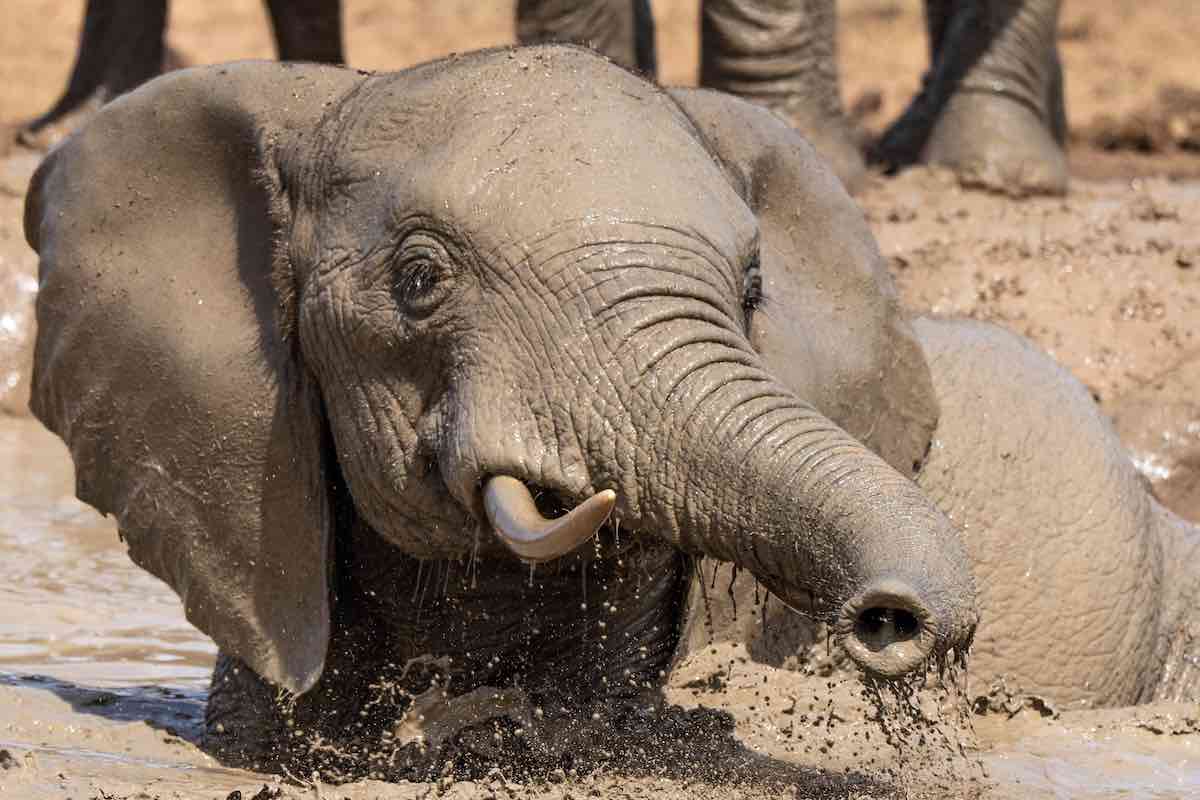Elephant Bathing Habits: A Fascinating Look at Their Hygiene and Social Life
Elephants are known for their intelligence, empathy, and the strong social bonds they form with one another. One fascinating aspect of their lives is the way they keep themselves clean and healthy through unique bathing rituals.
These practices also play a significant role in their overall well-being and social dynamics.
In this article, we explore the various methods elephants use to stay clean, such as submerging in water, spraying water with their trunks, and rubbing themselves with sand or dirt for exfoliation. We also discuss their natural adaptations for cooling down and the importance of cooperation within their communities for maintaining good hygiene.
Join us on this captivating journey into the world of elephant bathing habits, where we uncover the secrets behind their remarkable approach to hygiene and well-being.
Key Takeaways:
- Elephants are social animals that have a natural habit of taking daily baths for keeping themselves clean and fresh.
- Bathing is important for them to remove dirt, sweat, and parasites from their skin.
- Elephants use various methods of bathing, such as submerging in water, using their trunks to spray water, and rubbing themselves with sand or dirt for exfoliation.
- Elephants have natural adaptations to cool themselves, such as flapping their ears and using their skin to dissipate heat. Bathing is an important tool for cooling, especially in hotter climates.
Elephant Bathing Habits
Elephants are known for their clean and organized habits when it comes to their overall hygiene. They have unique practices for keeping themselves clean and healthy.
Their bathing routine is essential for both their physical and mental well-being. Elephants use their trunks to spray and suck water, which they then splash over their bodies. This process involves a lot of playing, rolling, and socializing – making it a fun and interactive activity for the entire herd.
To maintain healthy skin, elephants use sand and dust baths, which act as a natural scrub and help remove dead skin and parasites.
They also rub their bodies against sturdy trees and rocks to clean hard-to-reach areas.
Additionally, elephants use their trunks to clean their eyes, ears, and even their teeth. They are also careful about their diets, which helps prevent foul odors and unnecessary waste.
One unique aspect of elephant hygiene is their use of communal dung piles as a means of maintaining hygienic surroundings. Elephant dung contains substances that repel bugs and insects, making it an ideal place for elephants to rest and socialize without getting bitten.
How Elephants Wash Themselves

Due to their immense size, how elephants clean themselves is a question that raises curiosity. They mainly use their trunks as a tool to help clean themselves.
The trunk, which is an extension of the elephant’s upper lip, is capable of spraying water and air, similar to a hose. Elephants can use their trunks to fill them up with water and to spray water all over their bodies.
Despite not having sweat glands, elephants still manage to keep themselves clean by spraying water and rolling around in mud to remove any dirt or parasites. They have even been observed using sticks and branches to remove any dead skin.
Adult elephants can spend up to 12 hours a day on grooming activities.
John Williams, ElephantGuide
One unique detail is that elephants are known for their strong social bonds and rely on one another for grooming. They use their trunks to remove parasites from each other’s skin, which helps prevent any potential diseases.
Overall, elephants have an extraordinary ability to clean themselves using their trunks and have strong social bonds that contribute to their hygiene.
Methods of Cooling
As elephants roam their environments, they use various unique methods of temperature regulation to stay cool.
These methods include:
- Using water to spray themselves
- Standing in the shade of trees or rocks
- Flapping their ears to increase airflow
- Bathing in mud to protect themselves from the sun’s harsh rays
Elephants are also known to have a strong sense of self-awareness and can recognize themselves in mirrors, which helps them to assess their physical condition and determine if they need to cool down.
According to the World Wildlife Fund, elephants can tolerate temperatures ranging from 50°F to over 100°F.
Elephant Bathing and Cooling Habits

Elephants are known for their unique bathing and cooling habits. As mentioned, they use a combination of mud, dust, and water to keep themselves clean and cool.
They often roll in mud to protect themselves from the sun’s heat and insect bites. Afterwards, they use their trunks to shower themselves with water or dust to dry off.
This process not only helps to regulate their body temperature but also removes parasites from their skin.
Controversy Surrounding Bathing with Elephants
The ethical debate regarding bathing with elephants remains controversial. Despite the fact that elephants appear to enjoy the activity, animal welfare advocates worry that bathing could be stressful and harmful to the animals.
Advocates argue that tourists should instead observe elephants in their natural habitat.
Bathing with elephants may also have environmental consequences, such as polluting water sources with soap, oil, and sunscreen.
It is important to consider both animal welfare and conservation issues when deciding whether or not to bathe with elephants.
One unique concern is that some elephants may be trained with cruel methods, such as using bullhooks, in order to get them to cooperate with bathing.
Although some establishments claim to use positive reinforcement methods, it is difficult to guarantee that this is always the case. Another concern is that bathing may interfere with the elephants’ social hierarchy and create unnecessary competition for resources.
To promote ethical elephant tourism practices, some suggest visiting facilities that prioritize conservation rather than entertainment.
Conclusion
Elephants have a unique way of cleaning themselves due to their thick skin and high sensitivity to external irritants.
Their cleaning behavior involves mud baths, dusting, and sand bathing, which helps remove dead skin cells, parasites, and other debris. Moreover, their trunks are used to spray water or dust on their bodies for a thorough cleanse.
Although elephants clean themselves, their social behavior also plays an important role in hygiene maintenance.
Elephants help one another by removing dirt and debris from each other’s skin. These cleaning behaviors are essential for maintaining good hygiene and health among elephants, both in the wild and in captivity.
Five Key Facts About How Elephants Clean Themselves:
✅ Elephants bathe themselves once a day using bodies of water such as rivers or ponds to keep their skin clean.
✅ Elephants use their trunks to spray water or dust onto their bodies to remove dirt and parasites and submerge themselves using their trunks as snorkels to wash their entire bodies.
✅ After bathing, elephants often use their trunks to shower themselves with sand or dirt, which helps to keep their skin dry and free of insects.
✅ Elephants rely on physical adaptations such as their ears and behaviors such as bathing themselves to cope with heat since they do not have sweat glands.
✅ Elephants use their ears as fans and flap them to cool their bodies and often position themselves downwind to optimize temperature regulation through their ears.
FAQs about How Elephants Clean Themselves?
Elephants use their trunks to spray water or dust onto their bodies, submerge themselves in water, and use their trunks as snorkels to breathe while they wash their entire bodies. They also use their tusks or trunks to remove mud and spray their bodies with water.
Elephants need to keep themselves clean because of the sensitivity of their skin. They also enjoy spending time in the water, as it is refreshing for them. Bathing is also a social activity for elephants, as they often go in with their herd.
Bathing with elephants is considered mistreatment because those who trade in this type of activity force the elephants to be in the water for a long time, which only affects the health of their skin. Elephants should go in and out of the water according to their needs, and forcing them to stay longer than they want is another form of mistreatment. Instead, the idea is to give them freedom, space, and autonomy in their natural habitat.
